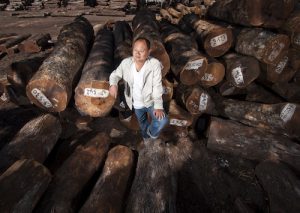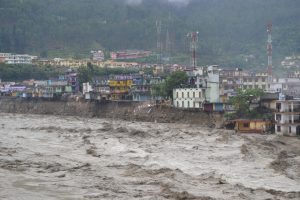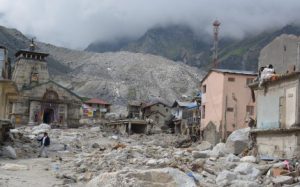chinadialogue: How important is Chinese investment in Latin America?
Kevin Gallagher: China is by far the most important lender in the region. In 2010, Chinese institutions committed $37 billion in loans, which was more than the World Bank, the InterAmerican Development Bank and the US Export-Import Bank combined. The Chinese Development Bank was responsible for 81% of those loans, whilst the Chinese Import/Export Bank and Chinese Industrial and Commercial Bank contributed 12% and 6% respectively. Whilst loans from Western and International institutions cover a range of governmental, social and environmental projects, Chinese loans are focused on infrastructure and heavy industry. They tend to be either to a Chinese company to do a project in Latin America, or directly to a government in the region. For example, Ecuador is in charge of hydroelectric plants for which they borrowed money from the Chinese to build.
CD: How would you rate Chinese financial institutions efforts to integrate environmental accounting into their lending practices?
KG: I would say they deserve a B+ on paper; especially given where they are in terms of GDP per capita. When the United States was at $5,000 GDP per capita we still had 9-year-old boys in coalmines and did not think about environmental standards. The Chinese are trying and they are publishing guidelines, such as the requirement for ex-ante environmental impact statements for all projects they finance. On paper these folks are doing great and it’s great that they are thinking about these things. But if you look at the individual scores for everything they do, the one thing they are falling very short on is transparency and accountability. Even though their guidelines require that they do an ex-ante environmental impact statement, nobody I know has ever seen one! A key component of environmental accounting is that it is supposed to be a tool for the company to identify risk and mitigate costs but it is also supposed to be a tool for the public and the government to do the same. But Chinese environmental assessments are not being shared with the host government or local communities so that is impossible. That is starting to cause some civil society concern in many countries.
CD: How are international financial institutions different from Chinese banks in their approach?
KG: When the World Bank lends you money to build a hydroelectric plant, they say ‘we are not going to lend you money to build a dam that is going to divert water supplies from people’s irrigation or where indigenous people have lived for a long time’, and there will need to be an Environment Impact Assessment to secure the funding for that project. The assessment goes on their webpage and there is time for comment and dialogue with local communities and governments. In the Chinese case they are lending money to big hydroelectric projects and it’s not clear that the monitoring process is there.
CD: Does China just simply adhere to the environmental laws of another country rather than impose its own standards?
KG: The Chinese do have their own environmental standards, but they are not up to the global norm. It is clear that in almost every case China is willing to meet the requirements of host governments. The criticism of the US and World Bank used to be that we had high standards at home but did not apply them when we went abroad. Environmentalists were able to say to US companies, ‘we know you know how to do this, you do it in California, so now do it abroad.’ What is fascinating about the Chinese case is that they have low standards at home and they have higher standards when they go abroad. When the Chinese first went abroad there were ready-made civil societies and regulations that they were breaking. Other development banks and large lenders felt like they were losing ground to the Chinese who were able to lend money more easily as they operated with less rigorous environmental and consultative processes. Organisations like the IMF and World Bank therefore reached out an olive branch to the Chinese, trying to share their best practises and help them avoid the problems they were having. If China can learn this abroad, maybe they can take the lessons back home.
CD: Where does the pressure on Chinese Financial Institutions to raise their standards come from?
KG: A lot of major international NGOs now have full time staff that are looking at the environmental impact of Chinese investment abroad because there have been so many local environmental problems. Most of the international NGOs work with local partners in developing countries to pressure the Chinese in those host countries. In China, there is just the beginning of domestic pressure on China’s overseas investment. But the focus is much more on domestic projects. Since Chinese overseas investment is really only a 10-15 year phenomenon not a lot of Chinese people know it’s happening as fast as it is and the environmental community is not so focussed on this. There are also a couple of international NGOs with offices directly in China working on this, such as the Global Environment Institute, which did a translation of these institutions’ guidelines into English, but they are few and far between.
CD: Will the pressure for ensuring Chinese loans go to environmentally friendly projects ultimately need to come from Latin American countries?
KG: Yes. I see the China question as 90% of Latin America’s challenge. There is a great opportunity here with Chinese investment at a time when US and European investment is sluggish at best. But they need to be careful because what the Chinese want, at their current stage of development, is very national resource-based stuff as they are in the process of industrialisation. Latin America needs to put in place the policies and incentives to use this new growth pole to channel diversified growth in a sustainable manner or in 15 to 20 years they might have a lot of holes in the ground and a lot of angry people!
Kevin P. Gallagher is Associate Professor of International Relations at Boston University and the author of The Dragon in the Room: China and the Future of Latin American Industrialization





